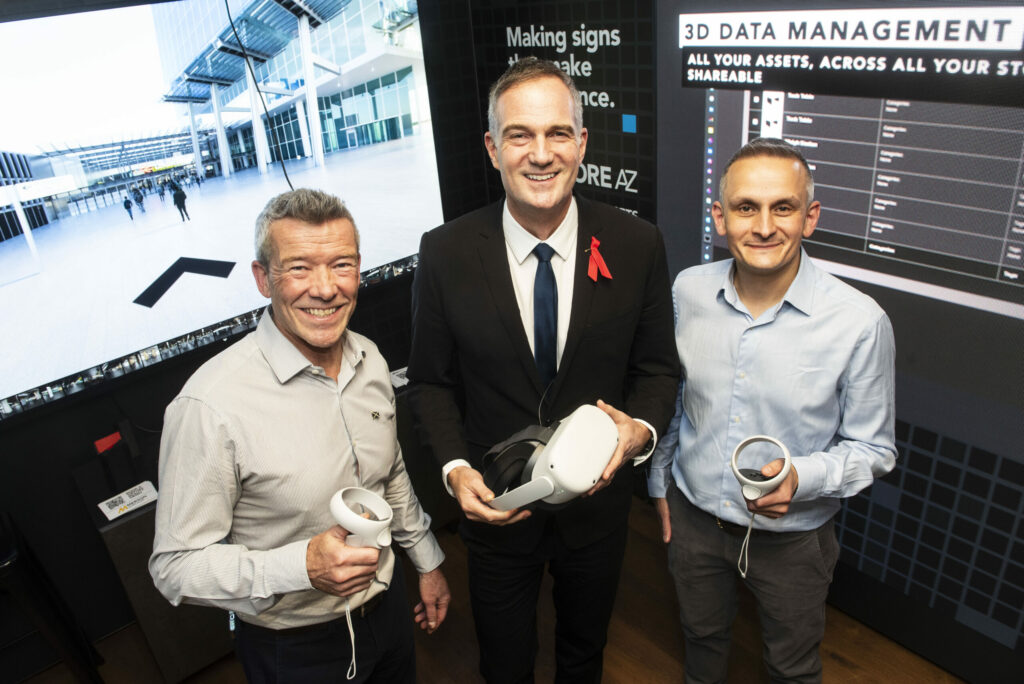
By Georgia Evans
Stadiums and Arenas: The Importance of Inspired Visual Design
Ask any sports fan, and they’ll tell you that nothing quite compares to the energy and buzzing anticipation of a packed-out stadium or arena. A key component in building that ambiance is the stadium’s visual design. Acting as a backdrop to major events and performances, a beautifully designed stadium or arena creates an immersive, inspiring environment for athletes and spectators alike.
A stadium’s design also plays a part in generating sponsorship and advertising income and can put it firmly on a city’s map as a much-visited landmark. More practically, smart use of digital signage is helping crowds flow smoothly, reducing queuing times, and improving safety for everyone.
Inspiring Design
When it comes to designing a stadium or arena, visual elements create an immersive environment for spectators. Stadiums are often considered the ‘home’ of a team and its fans, so consistency with colours, logos and overall branding builds a strong sense of identity.
Whilst this helps spectators connect with their favourite team or sports star, it can also motivate athletes. The use of well-thought-out visual design can energise players, adding to the ‘home-field advantage’ by creating an environment that feels supportive and conducive to top performance.
A beautifully designed stadium can become more than a place for hosting events; it can become a landmark and tourist attraction. Take, as an example, the swathes of international tourists who make the trip to Old Trafford or Emirates stadium – regardless of whether it’s the home of their favourite team!
A lot of stadiums and arenas rely on sponsorships and partnerships to fund their construction and ongoing maintenance. Therefore, inspired visual design can provide opportunities for integrating sponsor logos, advertising, and promotional materials in an appealing and memorable way. By seamlessly incorporating sponsorship elements into the stadium’s design, it becomes more attractive to potential sponsors, ultimately increasing the amount of revenue a stadium can bring in.
Going Digital
Want to greet fans with a video of their heroes? Want to give an action-replay of a match’s best bits? Stadiums can do that, and so much more, with the help of dynamic digital signage.
Equally, installing digital signage opens opportunities for stadiums to market their venue to host non sporting events. Whether it’s private parties, corporate events or even high-profile concerts, a lot of stadiums are doubling up as event venues. This provides a highly profitable revenue stream when the stadium would otherwise be out of action.
The true power of digital signage lies in its adaptability. So, whether it’s a marriage or a sell-out performance, signage can be changed to reflect the event. Not only does this set the right mood, but it can be used to give personalised directions, display the day’s agenda, or even help everyone find their spot on a seating plan.
On game days, digital signage is a powerful tool for crowd control. In large venues with hordes of excitable fans, crowd control and safety are always a number one priority. Ever-changing digital signage can be used alongside static signage to guide fans in the right direction, give more specific stand/block information, and reduce bottlenecks by strategically guiding crowds towards less busy entrances and exits.
It can also be used to highlight changing security regulations, for example items that are forbidden in the stadium or bag-size restrictions. This is useful as it encourages visitors to dispose of banned items before they reach security checks, keeping everything flowing more smoothly and reducing queuing times for eager spectators.
Another area where queues tend to build? Food and drink kiosks! As everyone rushes to stock up on half-time snacks, long waits can cause frustration. Often delays are caused when menu items are unavailable. The decision-making time customers then take to re-read the menu and pick an alternative, when multiplied by thousands of people, really adds up. The solution? Using digital signage with integrated software to keep digital menu boards up to date with only available items.
Finally, if a stadium or arena’s outdoor digital signage is visible to people passing by – either by foot or on public transport – it creates a fantastic advertising opportunity. Large screens bring in an additional revenue stream, even when the venue isn’t hosting an event.
Stadiums, Arenas and Merson Digital
Here at Merson Digital, we’re proud to say that we’ve kitted out some of the most famous stadiums and arenas in the UK including stunning high spec signage for the iconic Tottenham stadium
When Chelsea Football Club wanted to enhance their fans’ match day experience, they came to us to design, manufacture, and install several 55 and 65-inch outdoor display screens. Not only did they need to be totally weatherproof, but they also needed to provide enough brightness to grab fans’ attention at any time of day.
Equally, the new totems and screens needed a watertight technical support. To keep everything running smoothly, on match days Chelsea FC has a two-hour support window so that any issues with dynamic content can be remedied immediately. For non-match days, next day support is provided to resolve any issues. As you can see, with Merson Digital, our partnerships continue far beyond initial installation.











